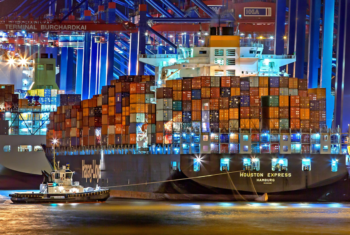
The shipping industry has been around for hundreds of years and has revolutionized the way in which we live. Thanks to the shipping industry, foods and products are no longer exclusive to only one part of the world. Furthermore, one of the ways in which the shipping industry has been able to survive for all these years is due to their exceptional ability to adapt with the times. Being able to adapt with the times is the key for industries to be able to survive for so long, and there is no industry that understands this better than the shipping industry. For example, shipping companies have recently implemented shipping APIs onto their websites. Shipping APIs help enhance the overall customer experience by reducing errors and complications that are associated with the shipping process. The shipping industry recognized a problem that their consumers were having, and used technology to fix it. This is the perfect example of adapting with the times.
However, the latest problem that the shipping industry faces is their negative impact on the environment. Not too long ago, environmental conservation was only something that few people cared about. According to a Pew Research Center survey, 74% of United States adults believe that the country should do whatever it takes to protect the environment.
In an effort to adapt with these most recent times, the shipping industry has implemented new “green” technologies and trends into their business strategies. These latest technologies and trends are slowly but surely taking over the shipping industry, and pretty soon, the industry will operate entirely different than it did as little as twenty years ago. In this article, I will be discussing the three biggest green trends and technologies that are taking over the shipping industry.
Slow Steaming
Slow steaming is a trend that was first introduced into the shipping industry a long time ago and is now considered a regular practice. Slow steaming is the process of operating ships at lower speeds. If shipping companies decide to operate their ships at lower speeds, they reduce their fuel consumption. Reducing fuel consumption not only saves the environment by reducing carbon emissions, but it also cuts costs for the shipping industry as well. This is why slow steaming is now considered a regular practice within the shipping industry.
Voyage Optimization
This trend refers to the use of technology in order to make more informed decisions when ships go out on a voyage. Due to recent advancements in technology, shipping companies are now able to predict the weather and maritime conditions with a high degree of accuracy. They are also now able to predict how a ship will do in certain conditions. Knowing this information allows them to plan energy-efficient routes for their ships. Planning out the perfect route, helps to save fuel and reduce their carbon footprint, saving them money.
Efficient Ship Designs
The third and final major green trend that is taking over the shipping industry is the careful design of each and every ship. One example of this is the design of a ships hull.
The design and shape of a ship’s hull is directly correlated to the performance efficiency of the ship’s vessel. Traditional ship hulls are rounded and not very efficient at cutting through water. However, if shipping companies design their ship’s hull in a more optimized and efficient way, they can significantly increase their ship’s speed and cut fuel costs. In order to design a ship’s hull in a more optimized and efficient way, the front of the boat needs to be shaped in a way that allows for a cushion of air to form beneath the hull when the ship is in motion. Doing this will reduce friction, which in turn saves fuel. The more fuel you save, the better for the industry and the environment.
Another example would be the use of less ballast. Ballast is essentially any heavy material that is placed in the vessel of a boat in order to improve its stability. Minimizing the use of ballast will automatically lower resistance because there is less weight on the boat. However, the ballast is essential to have on a boat because without it, you will not be able to immerse the propeller in the water which increases the risk of a disaster occurring. That is why it is recommended to only remove excess ballast and not all of it. Even by just removing excess ballast from a boat, it is estimated that you will reduce the boat propulsion power demand by 8.5%. By lowering the resistance of your boat, you are saving fuel and preserving the environment.
In summary, the shipping industry is already implementing strategies into their day to day operations that will effectively reduce their carbon footprint, as well as improve their overall efficiency. In this article, I have outlined the three biggest trends and technologies that are taking over the shipping industry, but there are many more minor trends and technologies that the shipping industries are implementing into their day to day operations. This is good news for all because when big industries and corporations decide to “go green”, everybody wins.

Green Jobs
How to Apply for a Green Job With the demand for green jobs skyrocketing so far in 2017, giving yourself a unique edge can be difficult—yet absolutely necessary—in order for you to become a proud worker for Mother Earth. Follow these steps to successfully claim your next environmentally friendly employment opportunity. 1. Resume: Make sure … Continue reading..



